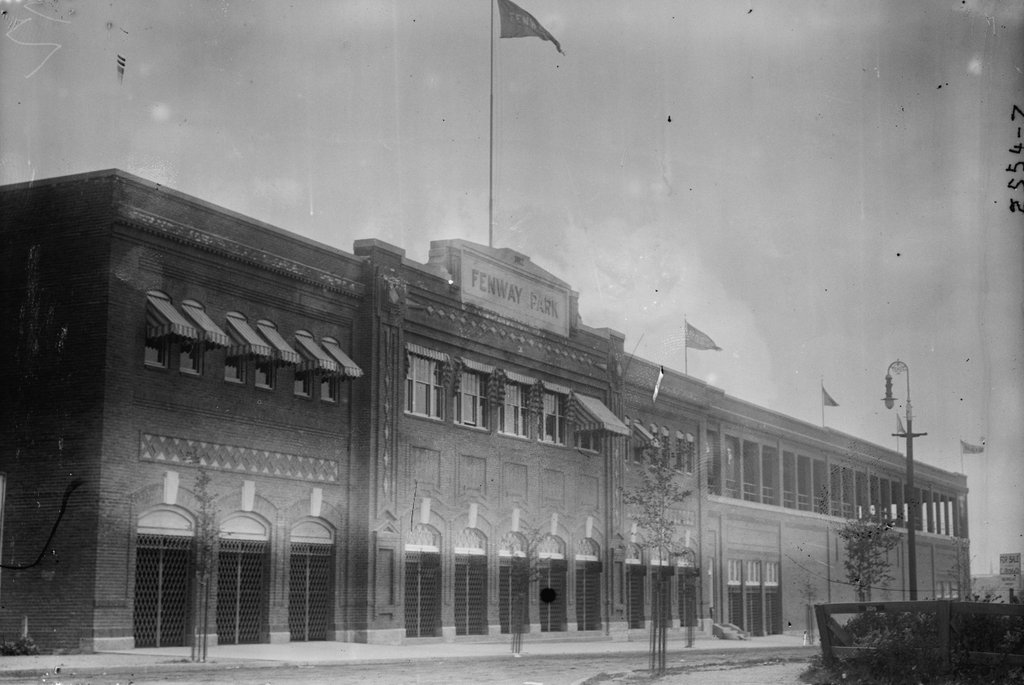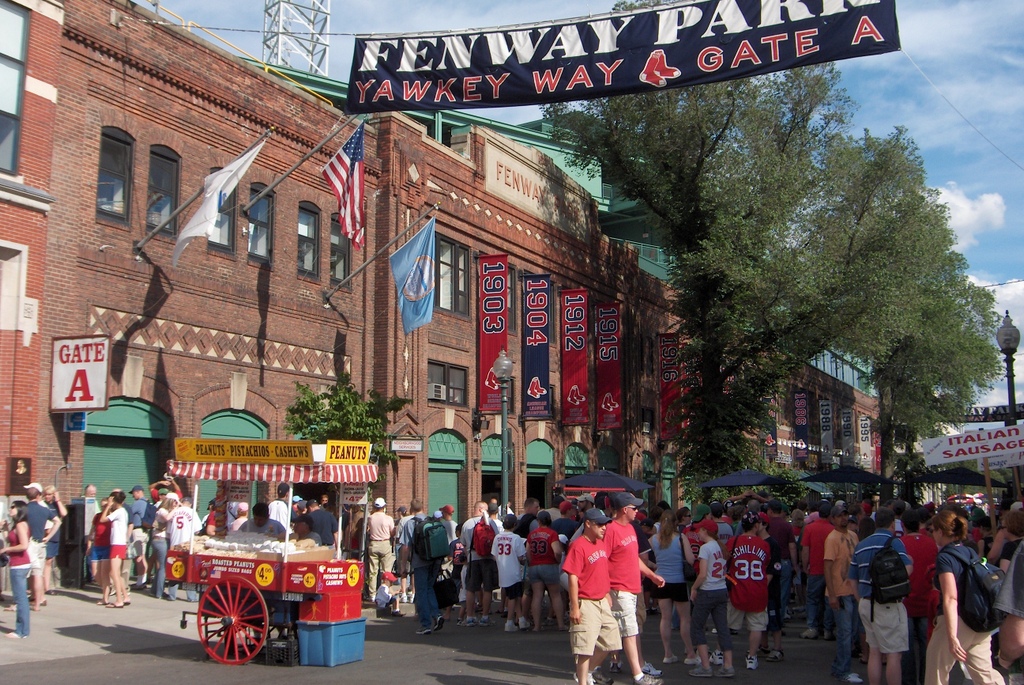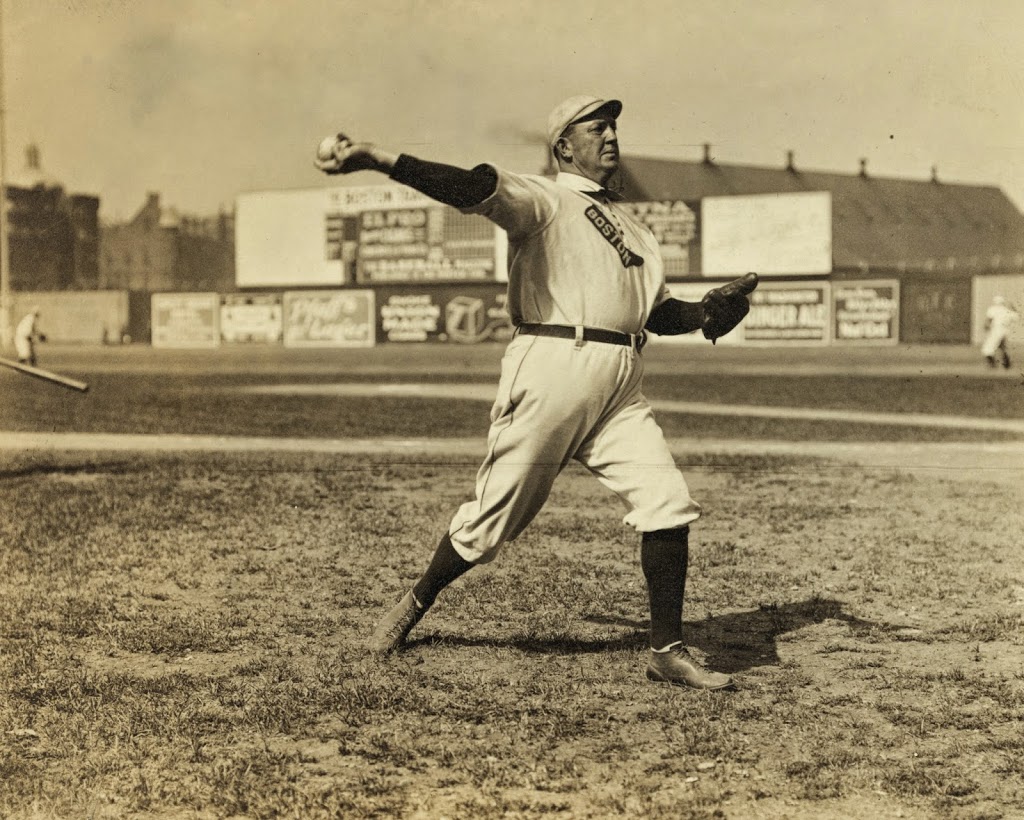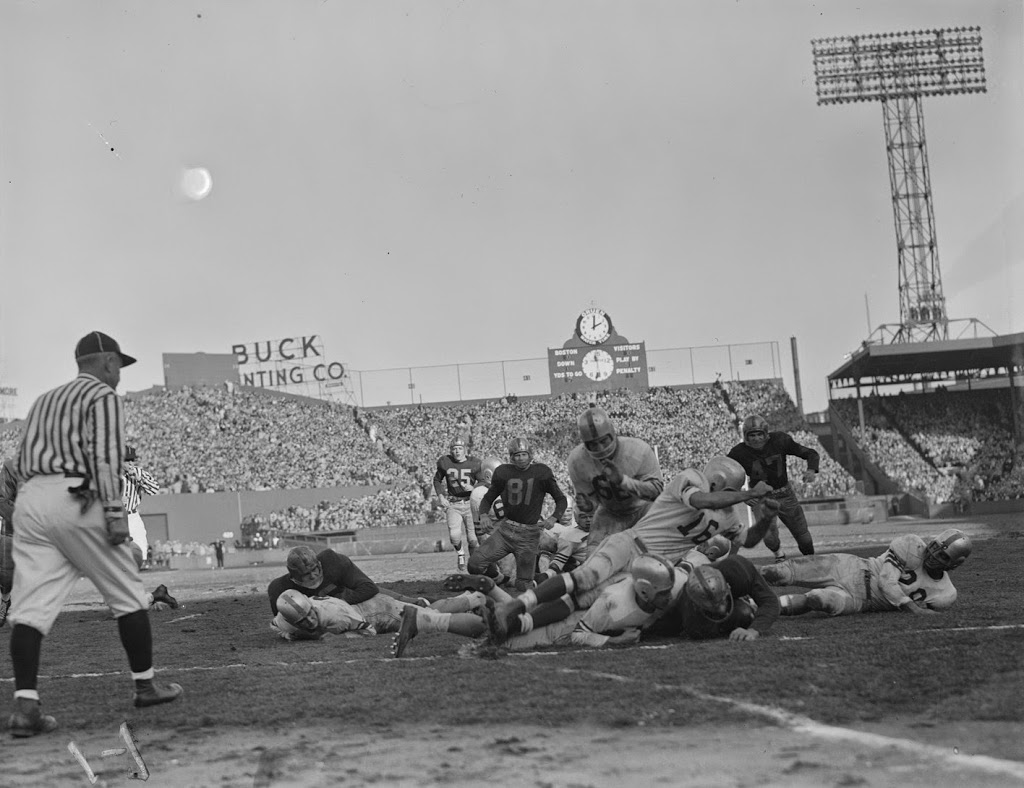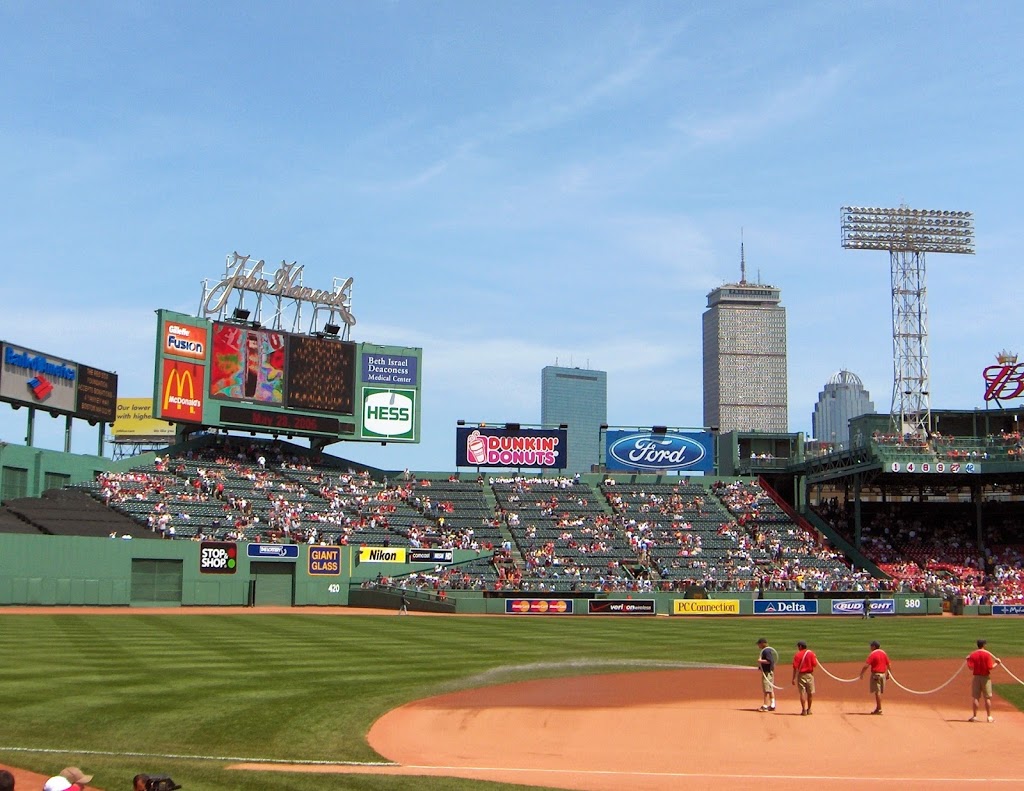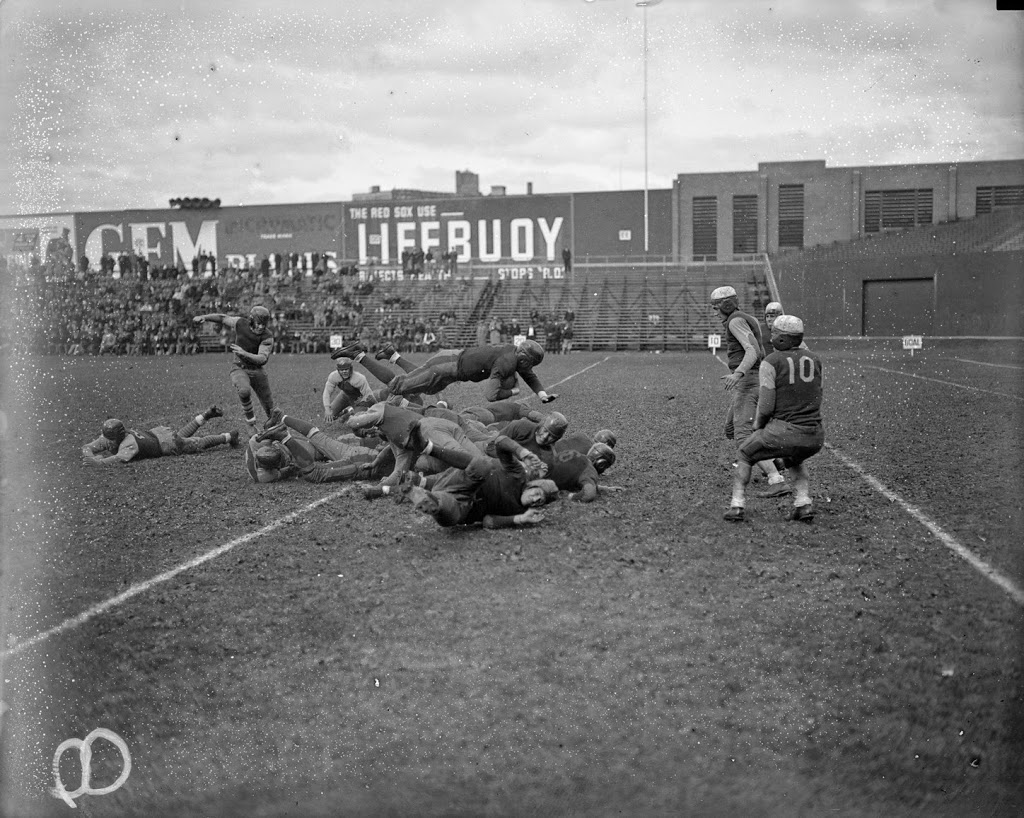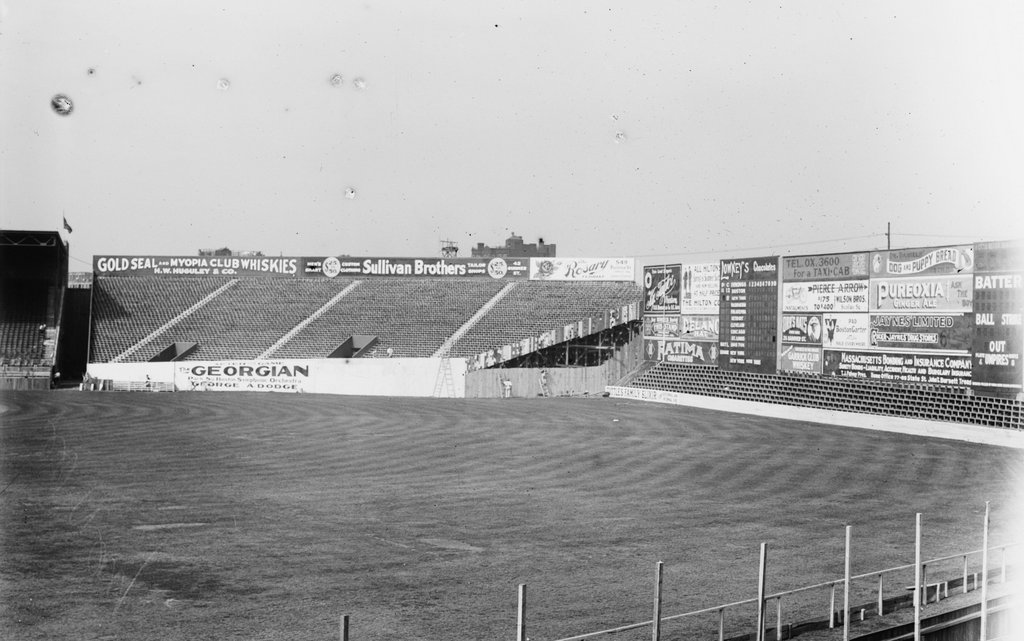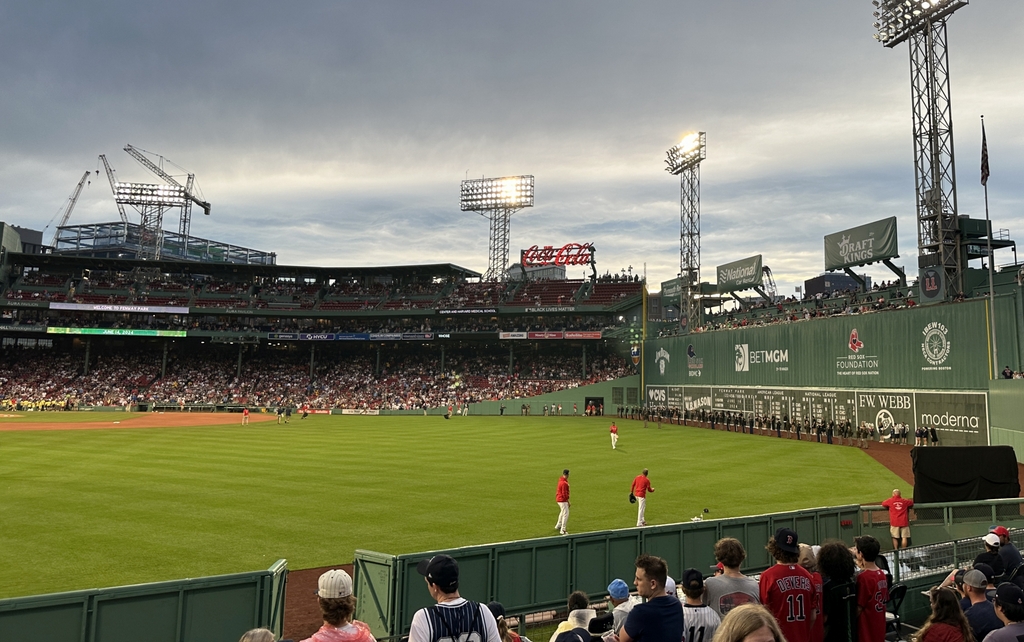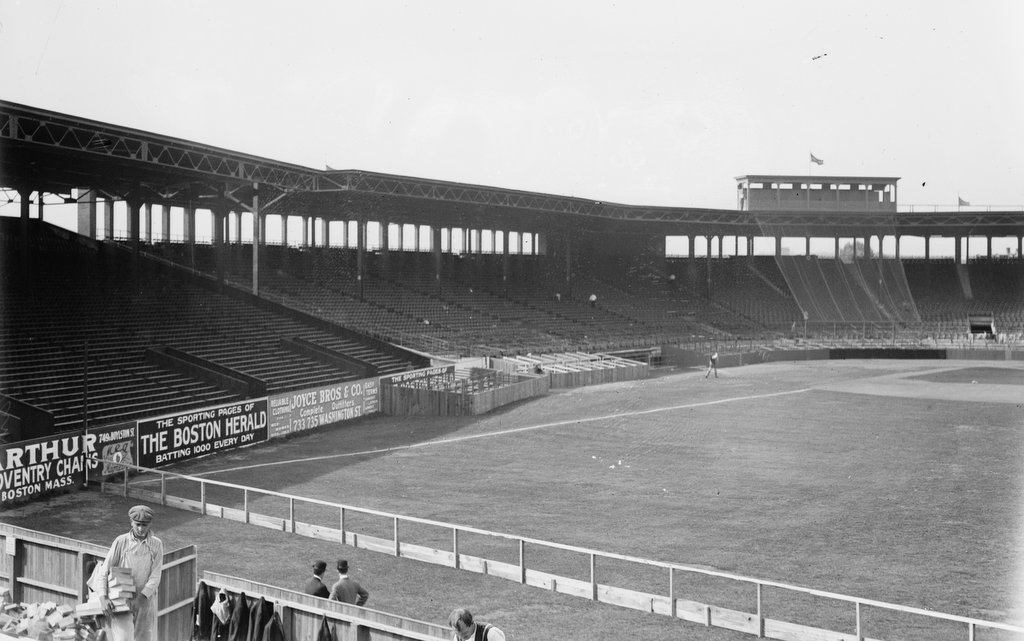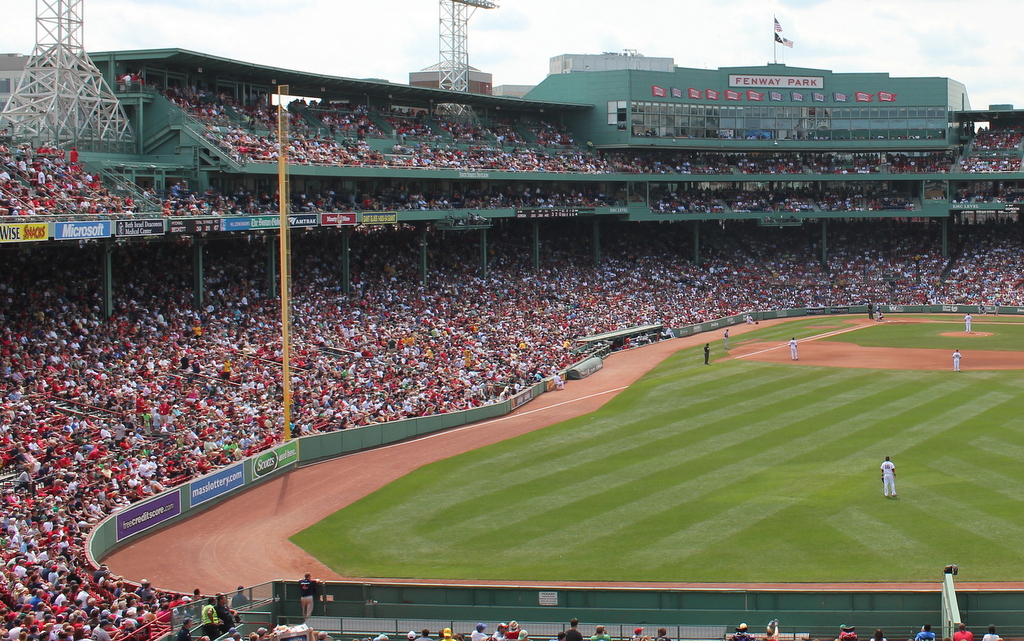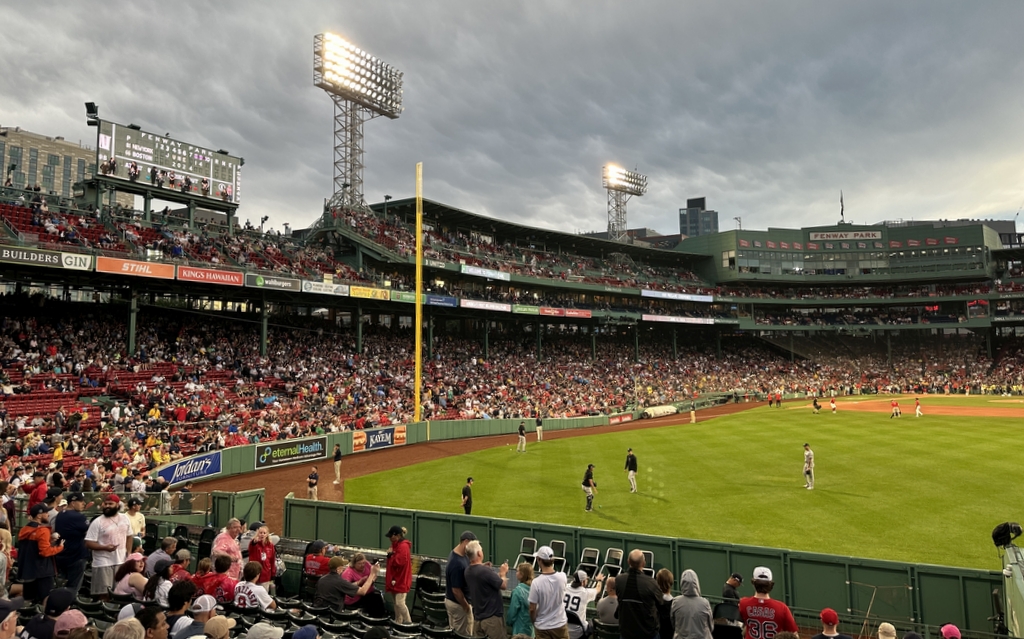The exterior of Fenway Park in 1914. Image courtesy of the Library of Congress, Bain Collection.
The same view in 2006:
The scene in 2024:
This is probably the only part of Fenway Park that is virtually unchanged since it opened nearly 102 years ago. Several fires, a massive reconstruction in 1934, and a number of smaller changes along the way have left very little remaining from the original park. However, the Jersey Street façade hasn’t changed much, aside from the addition of various championship banners that the team has won since they first made Fenway their home.
2024 update: I have added a 2024 photo of the same scene. Not a whole lot has changed, but there are a few additional World Series championship banners in the distance.

